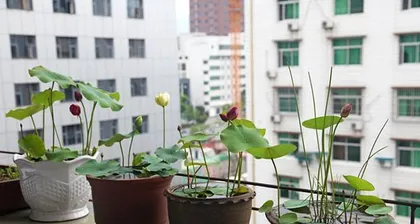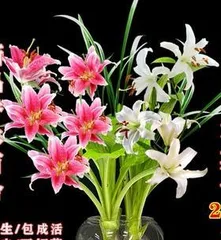Nasturtium is a common ornamental plant, beloved for its beautiful leaves and colorful flowers. However, whether nasturtium is toxic and how to safely grow it indoors are concerns for many. This article will provide a detailed introduction to these issues.

What is Nasturtium?
Nasturtium, also known as Lupine, Buddha's Hand Fern, etc., belongs to the legume family and is native to South America.
Is Nasturtium Poisonous?
Nasturtium contains toxic components such as cyanogenic glycosides. Ingesting excessive amounts can cause poisoning symptoms like vomiting, dizziness, and palpitations. Safety precautions must be taken during cultivation.

How to Safely Grow Nasturtium?
When purchasing, choose healthy plants to avoid weakness caused by root pests and diseases. Avoid injuries to skin or oral areas that come into contact with nasturtium, to prevent adverse effects on the body due to accelerated blood circulation. When using fertilizers and pesticides, follow the instructions carefully to avoid overuse or accidental ingestion.
What are the environmental requirements for growing nasturtium?
Nasturtium prefers a warm, humid climate and is suitable for indoor growth at temperatures of 18-25°C and a relative humidity of about 70%. At the same time, nasturtium requires plenty of sunlight, making it suitable for cultivation in outdoor environments with good light transmission, such as balconies.
What are the watering and fertilizing methods for nasturtium?
Nasturtium likes a moist soil environment, so it needs frequent watering, but not too often to avoid waterlogging the soil. Additionally, applying an appropriate amount of fertilizer during the growing season can promote its growth and development, but excessive application should be avoided to prevent high fertilizer concentration from harming the plant.

What are the propagation methods for nasturtium?
Nasturtium can be propagated by seeds and cuttings. Among these, seed propagation requires a certain amount of time and conditions, while cuttings are relatively easy to succeed and take a shorter time.
How to prune and manage nasturtium?
During the growing period, nasturtium needs regular pruning of leaves, flowers, and other parts to maintain a good shape and growth status. At the same time, the soil needs to be regularly cleaned to prevent the breeding of pests and diseases and to maintain a balance in soil moisture.
How to protect nasturtium from weather effects?
Under extreme weather conditions such as high summer temperatures and cold winters, nasturtium can experience slow growth and yellowing. In these situations, appropriate measures should be taken, such as increasing watering, adjusting light and temperature, to ensure the healthy growth of nasturtium.
Nasturtium is a beautiful yet toxic ornamental plant, so safety precautions are necessary during care. With a suitable climate and scientific care methods, nasturtium can grow vigorously and display brilliant colors, becoming a beautiful addition to home decoration.